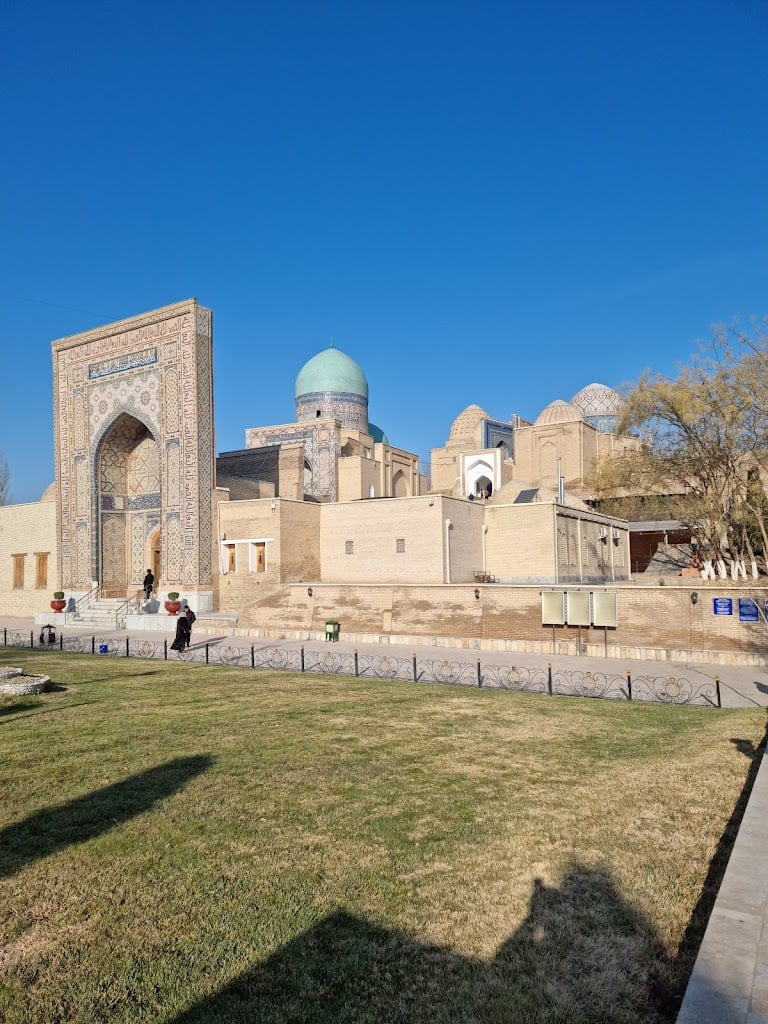Shah-i-Zinda





Ask ThatchGPT
Suggest a local expert to plan my trip
Suggest an unique itinerary for my Uzbekistan trip
What foods do Uzbekistan locals eat
What are some true hidden gems in Uzbekistan
Help me brainstorm trip ideas for Uzbekistan
Help me plan a family-friendly trip to Uzbekistan
What people say
Pedro Pereira
Available for hire
"Shakhi Zinda complex, situated not far from Bibi Khanum mosque in Samarkand, Uzbekistan, stands as one of the city's most enigmatic and remarkable architectural wonders. Comprising a series of elegantly crafted blue-domed mausoleums, the complex exudes a sense of mystical allure, with each tomb contributing to a captivating ensemble along narrow medieval streets. Dating back to the 14th and 15th centuries, Shakhi Zinda encompasses eleven mausoleums, each built in succession, forming a breathtaking display of architectural splendor.
This unique ensemble of ancient tombs, often referred to as the "Street cemetery," is nestled near the Afrasiab settlement and resembles an exquisite necklace with its gracefully stretched mosques and mausoleums adorned with blue domes. Serving as the final resting place for royalty and nobility, Shakhi Zinda is believed to have originated from the imaginary grave of Kusam ibn Abbas, cousin of Prophet Muhammad, who is said to have preached Islam in the region. Over time, the complex evolved into a revered pilgrimage site, known as "The Living King," attracting devout pilgrims and spiritual seekers seeking solace and healing.
According to legend, Kusam ibn Abbas arrived in Samarkand in 640 AD, where he preached for thirteen years before being martyred by Zoroastrians during prayer. His grave holds immense significance, drawing religious and spiritual tourists to Samarkand, with its waters believed to possess miraculous healing properties. The mausoleums within the Shakhi Zinda complex form a cohesive composition, each adorned with intricate architectural embellishments such as glazed tiles, carved mosaics, and ornate porticos, reflecting the artistic ingenuity of the era.
The grandeur of the complex culminates in the main entrance to the crypt, constructed in 1434/35 AD by Abdulazizhan, son of Ulugbek-Guragana, descendant of Amir Timur-Guragana. As visitors ascend the thirty-six steps leading to an open gallery, they are greeted by a series of crypts housing the relatives of Tamerlane, culminating in the revered Mausoleum of Kusam ibn Abbas. Steeped in legend and history, Shakhi Zinda stands as a testament to the enduring spiritual legacy of Samarkand, captivating visitors with its timeless allure and sacred atmosphere."
Read more in:
Anna Kępa
"For us it was top 1 place. We spend here around 1,5h enjoying tile work in this place and the precision of it."
Read more in:
Mentioned in these guides
About Shah-i-Zinda
Get the inside scoop on Shah-i-Zinda from local experts, travel creators, and tastemakers. Browse genuine trip notes, Shah-i-Zinda reviews, photos, travel guides, and itineraries from real travelers and plan your trip with confidence.
Phone
Save this spot for later or start mapping out a new trip today
Try our AI Travel Assistant and get instant answers to any questions about your trip.
Ask ThatchGPT


